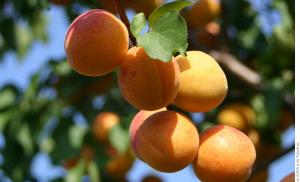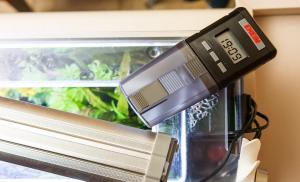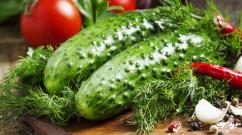Biology presentation on the topic "The most amazing intestinal animals" (Grade 7). Interesting facts about the coelenterates These amazing coelenterates are jellyfish and corals, as well as worms
These amazing coelenterates - jellyfish and corals, as well as worms
These amazing coelenterates - jellyfish and corals, as well as worms
The most numerous predators
According to the predominance of jellyfish remains, the end of the Proterozoic is called the "age of jellyfish." Then, about 700 million years ago, the first animals appeared in the sea. They were primitive invertebrates, worms and jellyfish. Since then, the jellyfish has been one of the most numerous predators on Earth. First, the jellyfish absorbs everything that it finds on its way in close proximity. Then he makes a stop. It rises from the depth to a meter or two and keeps the reverse course. In front of her are crustaceans, rising up after her first passage.
Pretty simple creatures
Jellyfish are fairly simple creatures compared to humans. Their body lacks blood vessels, hearts, lungs, and most other organs. Jellyfish have a mouth, often located on a stalk and surrounded by tentacles. The mouth leads to a branched intestine. And most of the body of a jellyfish is an umbrella. Tentacles also often grow on its edges.

Gelatin form of being
Thanks to the original jelly-like form, the buoyancy potential is used in the jellyfish. A particularly rigid body in the ocean is not necessary: here in the aquatic environment, marine life has nothing to bump into.
Jellyfish can contract to eject a water jet and at the same time are not provided with muscles to return to their original position. For this reason, the bodies of some jellyfish form around a transparent disc. Its substance, although jelly-like, but with collagen threads, which give the disc sufficient elasticity. Such a disk has shape memory.
Jellyfish eat crabs?
Medusa muscles
The umbrella of a jellyfish consists of a gelatinous elastic substance. It contains a lot of water, but there are also strong fibers made from special proteins. The upper and lower surfaces of the umbrella are covered with cells. They form the covers of the jellyfish - its "skin". But they are different from our skin cells. Firstly, they are located in only one layer (we have several dozen layers of cells in the outer layer of the skin). Secondly, they are all alive (we have dead cells on the surface of the skin). Thirdly, the integumentary cells of jellyfish usually have muscular processes; therefore they are called skin-muscular. These processes are especially well developed in cells on the lower surface of the umbrella. The muscular processes stretch along the edges of the umbrella and form the annular muscles of the jellyfish (some jellyfish also have radial muscles located like spokes in an umbrella). When the ring muscles contract, the umbrella contracts, and water is ejected from under it.
Brain and nerves of a jellyfish
It is often believed that the nervous system of jellyfish is a simple nervous network of individual cells. But this is also false. Jellyfish have complex sensory organs (eyes and balance organs) and clusters of nerve cells - nerve nodes. You could even say that they have a brain. Only it is not like the brain of most animals, which is in the head. Jellyfish don't have a head and their brain is a ring of nerves with ganglions on the edge of the umbrella. Outgrowths of nerve cells extend from this ring, giving commands to the muscles. Among the cells of the nerve ring there are amazing cells - pacemakers. In them, at certain intervals, an electrical signal (nerve impulse) occurs without any external influence. Then this signal spreads along the ring, is transmitted to the muscles, and the jellyfish contracts the umbrella. If these cells are removed or destroyed, the umbrella will stop contracting. A person has similar cells in the heart.
Jellyfish are constantly eating

Examining schools of herring spawning off the coast of British Columbia, biologists found that in one day the crystal jellyfish ate the entire herring offspring. In addition, jellyfish harm fish and those that devour their food. For a number of reasons, a huge number of jellyfish mnemopsis. Shortly thereafter, the herring catch dropped from 600 to 200 tons per year.
jellyfish flight
The well-studied jellyfish aglantha (Aglantha digitale) has two types of swimming - normal and "flight response". When swimming slowly, the muscles of the umbrella contract weakly, and with each contraction, the jellyfish advances one body length (about 1 cm). During the “flight reaction” (for example, if you pinch a jellyfish by the tentacle), the muscles contract strongly and often, and for each contraction of the umbrella, the jellyfish moves forward by 4–5 body lengths, and in a second it can overcome almost half a meter. It turned out that the signal to the muscles is transmitted in both cases along the same large nerve processes (giant axons), but at different speeds! The ability of the same axons to transmit signals at different speeds has not yet been found in any other animal.
Because of the jellyfish, there will be more sprats
Scientists are starting an experiment in the Caspian Sea to introduce the Beroe jellyfish, which feeds on the comb jelly Mnemiopsis. It was he who caused the catastrophic reduction in the sprat population in the Caspian. Mnemiopsis was introduced with ballast water from the Sea of Azov. Feeding on plankton, mnepiopsis undermined the food base for sprats for two years. As a result, it has become so scarce that the catches of this species of fish have decreased by almost ten times. For example, this year the quota for its catch will be only 23.9 thousand tons. Although ten years ago this figure was close to 225 thousand tons, most of the fish factories of the Astrakhan region were focused on the processing of sprat.

Reasons for the growth in the number of jellyfish
In overfishing of commercial fish species - the main fighters of jellyfish. Among the main enemies of jellyfish are tuna, sea turtles, ocean moon fish and some ocean birds. Salmon does not disdain jellyfish either.
Abundance of jellyfish
In Chesapeake Bay, Maryland, there are so many jellyfish that you can’t do a single step near the shore. without stepping on them. The feeling is not pleasant - as if you are walking through thickets of nettles. The reason is the stinging cells of jellyfish.
In 2002, on the French Cote d'Azur, a large jellyfish pelagia purple-red color has bred in such numbers. That tore to shreds fishing nets with a total weight of over 2 thousand kg.
In Japan, jellyfish clogged the mouths of pipes for taking water into the cooling system of a nuclear power plant. Because of what, her work was stopped.
Fleeing from enemies, the jellyfish discards tentacles

Medusa colobonemaColobonema sericeum she discards tentacles, and she has 32 of them. This is probably why the jellyfish that are found near the coast. These deep-sea jellyfish, which are found at depths of 500-1500 m, rarely have a full set of tentacles. Kolobonema in its entirety can only be seen on the surface of the ocean. This is a small jellyfish, its dome diameter is 5 cm. The same thing happens with a lizard when it is grabbed by the tail. When swimming, the jellyfish moves in a jet way - by pushing water out of any part of the body, as a result of which the animal moves forward in the opposite direction.
Arctic giant jellyfish Cyanea
 The largest jellyfish in the world is the Arctic giant jellyfish (Cyanea), which lives in the Northwest Atlantic. One of these jellyfish, washed ashore in Massachusetts Bay, had a bell diameter of 2.28 m, and its tentacles extended 36.5 m. Each such jellyfish eats about 15 thousand fish during its life
The largest jellyfish in the world is the Arctic giant jellyfish (Cyanea), which lives in the Northwest Atlantic. One of these jellyfish, washed ashore in Massachusetts Bay, had a bell diameter of 2.28 m, and its tentacles extended 36.5 m. Each such jellyfish eats about 15 thousand fish during its life
The diameter of the cyanide jellyfish bell reaches two meters, and the length of the filamentous tentacles is 20-30 meters.
Extreme jellyfish
Lake Mogilnoye on the island of Kildin near the Kola Bay is a completely unique Arctic reservoir. It is located in close proximity to the sea, and sea water seeps into it. Sea and fresh water do not mix due to their different densities. From the surface to a depth of 5-6 m there is a layer of fresh water, in which freshwater forms of organisms live, such as cladocerans daphnia and chidorus. Below, up to 12 m, lies a layer of sea water in which jellyfish, cod, and crustaceans live. Even deeper is a layer of water contaminated with hydrogen sulfide, in which there are no animals.
Australian sea wasp Chironex fleckeri
 The most poisonous jellyfish in the world is the Australian sea wasp (Chironex fleckeri). After touching her tentacles, a person dies in 1-3 minutes if medical assistance does not arrive in time. The diameter of its dome is only 12 cm, but the tentacles are 7-8 m long. The venom of the sea wasp is similar in its action to that of the cobra and paralyzes the heart muscle. On the coast of Queensland in Australia, more than 70 people have become victims of this jellyfish since 1880.
The most poisonous jellyfish in the world is the Australian sea wasp (Chironex fleckeri). After touching her tentacles, a person dies in 1-3 minutes if medical assistance does not arrive in time. The diameter of its dome is only 12 cm, but the tentacles are 7-8 m long. The venom of the sea wasp is similar in its action to that of the cobra and paralyzes the heart muscle. On the coast of Queensland in Australia, more than 70 people have become victims of this jellyfish since 1880.
One effective form of protection is women's tights, which were once used by lifeguards at a surf competition in Queensland, Australia.
Giant jellyfish stygiomedusa gigantea
jellyfish sting

killer jellyfish Carukia barnesi, which has a deadly sting, is actually tiny - the length of its dome is only 12 millimeters. However, it is this animal that is blamed for the Irukandji syndrome, which killed two tourists in Australia in 2002. It all starts with a bite, like a mosquito. Within an hour, the victims experience severe pain in the lower back, shootings all over the body, convulsions, nausea, vomiting, sweating profusely and coughing. The consequences are extremely serious: from paralysis to death, cerebral hemorrhage or cardiac arrest.
Jellyfish are bred in captivity
Australian scientists from the CRC Reef Research Center have for the first time managed to grow in captivity the jellyfish Carukia barnesi, which has a deadly sting. The captured jellyfish has passed the planktonic stage and is now kept in the aquarium. Getting the jellyfish to breed in captivity was the first stage in the development of the antidote. In general, it will be necessary to study from 10 thousand to a million jellyfish.
Giant jellyfish of Japan Stomolophus nomurai
 Since September, thousands of giant jellyfish over a meter in size and weighing about 100 kilograms have been observed off the coast of the city of Echizen (Fukui Prefecture). They can reach a length of up to 5 meters, have poisonous tentacles, but are not fatal to humans. Their migration to the Sea of Japan is associated with an increase in water temperature.
Since September, thousands of giant jellyfish over a meter in size and weighing about 100 kilograms have been observed off the coast of the city of Echizen (Fukui Prefecture). They can reach a length of up to 5 meters, have poisonous tentacles, but are not fatal to humans. Their migration to the Sea of Japan is associated with an increase in water temperature.
Fishermen complain that jellyfish reduce their income because they kill or stun fish and shrimp caught in the net.
The species known as Stomolophus nomurai was discovered in the East China Sea. The fact that this species has occasionally appeared in the Sea of Japan between Japan and the Korean Peninsula since 1920 is due to rising water temperatures, they argue. Jellyfish, which can reach a length of up to 5 meters, have poisonous tentacles, but are not fatal to humans.
The most poisonous jellyfish can kill 12 people at once, they live in Australia
The jellyfish gene in the potato gene
As a result of the achievements of genetic engineering, it became possible to insert the gene of ... a jellyfish into the genome of a potato plant! Thanks to this gene, the body of the jellyfish retains fresh water, and with a lack of water in the soil, potatoes with this gene will also retain water. In addition, thanks to this gene, the jellyfish glows. And this property is preserved in potatoes: with a lack of water, its leaves glow green in infrared rays.
Sea feathers Pennatularia
About 300 species of polyps live in the oceans, which are called sea feathers (Pennatularia). Each polyp is a set of eight-tentacled individuals sitting on one common thick stem. Sea feathers live at a depth of 1 to 6 thousand m. At great depths, specimens up to 2.5 m long are found. Sea feathers are able to glow due to the special mucus that covers them from the outside. It has been observed that the mucus does not lose its ability to glow even when dried.
Anemone Actiniaria
 The distribution of sea anemones (Actiniaria), six-pointed corals, depends on the salinity of the sea water. For example, there are 15 species in the North Sea, 10 species in the Barents Sea, 5-6 species in the White Sea, 4 species in the Black Sea, and none at all in the Baltic and Azov Seas.
The distribution of sea anemones (Actiniaria), six-pointed corals, depends on the salinity of the sea water. For example, there are 15 species in the North Sea, 10 species in the Barents Sea, 5-6 species in the White Sea, 4 species in the Black Sea, and none at all in the Baltic and Azov Seas.
Sea anemones and clown fish
Hydra is a "vagrant stomach" equipped with tentacles
This is a real monster. Long tentacles armed with special stinging capsules. A mouth that expands so that it can swallow a prey far larger than the hydra itself. Hydra is insatiable. She eats constantly. Eats a myriad of prey, the weight of which exceeds its own. Hydra is omnivorous. Daphnia with cyclops and beef are suitable for her food. In the struggle for food, the hydra is ruthless. If two hydras suddenly seize the same prey, then neither will yield.
The Hydra never releases what has fallen into its tentacles. A larger monster will begin to drag a competitor along with the victim. First, it will swallow the prey itself, and then the smaller hydra. Both the victim and the less fortunate second predator will fall into the super-capacious womb (it can stretch several times!) But the hydra is inedible! A little time will pass and the larger monster will simply spit back its smaller counterpart. Moreover, everything that this last one managed to eat himself will be completely taken away by the winner. The loser will again see the light of God, being squeezed to the very last drop of something edible. But very little time will pass and the pitiful lump of mucus will again straighten its tentacles and again become a dangerous predator.

Exceptional survivability common hydra brilliantly demonstrated in the 18th century. Swiss scientist Tremblay: with the help of a pig bristle, he turned the gibra inside out. She continued to live as if nothing had happened, only the ectoderm and endoderm began to perform the functions of each other.
corals grow very fast. So, one favia larva ( favia) per year gives a colony with an area of 20 sq. mm and a height of 5 mm. There are corals that grow even faster. So, one of the ships that sank in the Persian Gulf, for 20 m, was overgrown with a crust of corals 60 cm thick.
The biggest sponge, barrel-shaped Spheciospongia vesparium, reaches height 105 cm and 91 cm in diameter. Such sponges live in the Caribbean Sea and off the coast of Florida, USA.
Speed of propagation of excitation in different parts of the nervous system of the coelenterates is 0.04-1.2 m per second.
Hermaphrodites
Among those who are really able to change sex at their own discretion are sea slugs, earthworms and the European giant garden worm.
Female worms simply inhale the small male
Females of one type of worm simply inhale the small male, which takes up residence in a nook in the reproductive tract, from where it fertilizes the eggs.
Boys eat girls
In marine oligochaete worms, the boys eat the girls. The males guard the fertilized eggs until they burst, and since the female is destined to die after mating anyway, the male, without hesitation, eats her for dinner. This kind of concern—offering herself as supper—is due to the fact that the female may want assurance that her offspring will survive.
The worm's blood is red, but different
All mammals have red blood due to the hemoglobin contained in red blood cells. There are no erythrocytes in the blood of invertebrates. However, their blood can still be red (for example, in an annelids, sandworm), only hemoglobin is not enclosed in blood cells, but forms large molecules dissolved directly in the plasma. This blood is called hemolymph.
Blood is green
Some polychaete annelids have green hemolymph due to the pigment chlorocruonin, which is similar to hemoglobin. This pigment is not enclosed in blood cells, but forms large molecules dissolved directly in the plasma.
Worms in canned mole
There is less food in winter than in summer, and in order not to starve, moles store “canned food” of worms for the winter: they bite off their heads and wall them up in the walls of their holes, sometimes hundreds of them at once. Without heads, worms cannot crawl far, but they do not die, and therefore do not deteriorate.
Earthworms from Europe pose a threat to North America

The Midwest of the United States, where there were no earthworms due to a massive glaciation that ended 10 thousand years ago, is at particular risk. In these parts, European species of worms appeared only in the last century. Some of them turned out to be involuntary migrants, arriving on ships moored in ports on the Great Lakes. Others were specially brought in as bait for anglers.
Earthworms do not so much enrich the soil with oxygen and nitrogen as they damage the thin layer of humus in which an interconnected community of insects and microorganisms lives. Worms process the forest floor around the clock. They digest it so quickly that they threaten the existence of other organisms at the beginning of the food chain, which, in turn, damages the more highly organized creatures for which they serve as food.
The presence of earthworms in the soil in Chippewa National Park has led to a decline in the populations of native insect species, small insectivorous mammals such as field mice and shrews, ground-nesting bird species (such as the stovepiper), and eventually to a reduction in areas occupied by sugar maple, a local forest-forming species.
Earthworms love buckthorn and hate oaks
Earthworms love to live in the roots of buckthorn, enriching the soil with nitrogenous compounds that this shrub needs for normal life. Such a symbiosis of two species damages other elements of the ecosystem. On the other hand, earthworms do not like oak leaves, in the plantings of which, their number is minimal.
Worms can live up to 500 years
 By carefully changing some genes and stimulating the production of certain hormones, scientists managed to extend the life of the laboratory worm several times over. By human standards, the experimental worm lived an active and healthy life for 500 years. The researchers claim that they have changed one of the main life-supporting mechanisms of the worm's body - the insulin metabolism system. This system is characteristic of many species, including mammals.
By carefully changing some genes and stimulating the production of certain hormones, scientists managed to extend the life of the laboratory worm several times over. By human standards, the experimental worm lived an active and healthy life for 500 years. The researchers claim that they have changed one of the main life-supporting mechanisms of the worm's body - the insulin metabolism system. This system is characteristic of many species, including mammals.
However, many people may decide that the price of immortality is too high. Worms that lived 500 years had their reproductive system removed.
The team of scientists from the USA and Portugal, which conducted this experiment, set a kind of record. They managed to help a living being live the longest possible life. Before them, no one could achieve such a life.
Males for asexual worms
 Male sex is important even for inconspicuous nematode - Caenorhabditis elegans, soil worms that can reproduce asexually. Its dimensions are very modest (the length is less than the thickness of a human hair). Worms grow very quickly, turning from an embryo into an adult in four days. They also have another interesting property: almost 99.9% of the population are hermaphrodites - females with two X chromosomes, capable of producing sperm and self-fertilizing. Indeed, in most cases, it is more profitable for a species to self-fertilize, and not to mate with males - sexual fertilization is costly in terms of time and energy. However, 0.1% of the population are males with one X chromosome. The presence of males is necessary for the survival of the species.
Male sex is important even for inconspicuous nematode - Caenorhabditis elegans, soil worms that can reproduce asexually. Its dimensions are very modest (the length is less than the thickness of a human hair). Worms grow very quickly, turning from an embryo into an adult in four days. They also have another interesting property: almost 99.9% of the population are hermaphrodites - females with two X chromosomes, capable of producing sperm and self-fertilizing. Indeed, in most cases, it is more profitable for a species to self-fertilize, and not to mate with males - sexual fertilization is costly in terms of time and energy. However, 0.1% of the population are males with one X chromosome. The presence of males is necessary for the survival of the species.
When conditions deteriorate, males make a key genetic contribution to the survival of the species. The X chromosome coming from them determines the survival of the species. It turned out that faced with hunger, about half of the hermaphrodite larvae, conceived sexually, turned into males, having lost one of the X chromosomes. This turned the larvae into males that look different, live longer and can pass on their genes through sperm. Worms conceived by self-fertilization did not possess such an ability. This means that sexually conceived worms can better adapt to changing environments than hermaphrodites. In addition, an increase in the number of males reduces the number of offspring - which is effective when food is scarce. In addition, males live longer and survive better in difficult conditions - they can make longer journeys in search of food.
The best time for worms

Earthworms belong to the oligochaete class Annelida. The best time of day to look for earthworms is at night when they emerge from their burrows. We must try so that the light of the lantern does not suddenly blind the animals, since in this case they will immediately hide in their holes. Mating earthworms lie side by side with their head ends in different directions, connected in the region of the girdle (expansion near the front edge).
16 tons of soil
Earthworms, living on half a hectare of the garden, pass through their bodies about 16 tons of soil per year.
Worms are garbage eaters
It is known that a worm per day processes as much organic matter into biohumus as it weighs itself. Earthworms can be used to dispose of garbage. It can cleanse the soil of harmful elements, as it is able to accumulate some metals, including zinc, which is most toxic to microbes living in fallen leaves and needles. Namely, they make the soil suitable for all other organisms and plants. Worms stimulate their activity, help to breathe, absorbing the poisons that people stuff the earth with.
In Russia, there are three successful breeds of worms - "Vladimir", "Petersburg" and "Bryansk" hybrids. They are extremely voracious - the "Petersburger" is happy to eat even the sediments of city sewers, if they are diluted with manure. According to researchers, worms can turn up to half of the food they eat into humus. The earth passed through their intestines contains almost no helminths and pathogenic microorganisms. But the worms will not be able to clean the urban soil from arsenic and heavy metal compounds, they only absorb zinc and cadmium well.
Worms on a hook don't feel pain
In an ordinary earthworm, the nervous system is very simple. A worm can be cut in half and it can continue to exist in peace. When the worm is put on a hook, it reflexively curls up, but it does not feel pain. Perhaps he is experiencing something, but this does not interfere with his existence.
Weight carrying record
A caterpillar can lift a load about 25 times its own weight, an ant 100 times, a leech 1500 times.
four-toed worm
The reptile, which is called "tatzelwurm" (four-toed worm), is a well-known representative of alpine reptiles. This beast, called "stollenwurm" (underground worm), was even listed in the New Handbook for Nature and Hunting Lovers, published in Bavaria in 1836. In this book there is a funny drawing of a cave worm - a cigar-shaped creature covered with scales with a formidable toothy mouth and underdeveloped, in the form of stumps, paws. However, no one has yet been able to find and examine the remains or shell of this animal, which could be considered the largest European lizard.
According to the testimony of 60 eyewitnesses, the length of the animal's body was approximately 60-90 centimeters, it had an elongated shape, and its back part sharply narrowed towards the end. The back of the beast had a brownish tint, and the belly was beige. It had a thick short tail, no neck, and two huge spherical eyes sparkled on its flattened head. His legs were so thin and short that some even tried to claim that he had no hind limbs at all. Some claimed that he was covered with scales, but this fact was not always confirmed. In any case, everyone was unanimous in their opinion that the beast hissed like a snake.
Coelenterates, like sponges, first appeared on earth more than 500 million years ago. They have multicellular organisms and a variety of forms. Coelenterates include sea anemones, jellyfish and corals.
general characteristics
The body of the coelenterates has the shape of a bag with a hole, which is surrounded by tentacles. They can be turned up like a polyp or down like a jellyfish. Coelenterates and sponges have a radially symmetrical body, that is, body parts are located around a central axis.
Nutrition
The internal cavity in the body of the coelenterates communicates with the surface through a single hole, which serves to eat and release undigested residues. Around the hole are tentacles that capture, paralyze and pull the prey inside.
Habitat
Coelenterates live in warm tropical seas; some of them lead a fixed way of life, others are free-floating. So, hydroids can be both motionless (polyps) and floating (jellyfish); the scyphoid class consists only of jellyfish, and the class of coral polyps includes only immobile forms - polyps living separately or in colonies. Coelenterates are multicellular organisms, characterized by a simple structure and radial symmetry. Such a structure is very convenient for animals that do not have the ability to move freely: both food and enemies can appear from anywhere, so it is important to be ready to attack or defend from any direction.
The body of all intestinal cavities consists of one internal cavity that communicates with the surface through a hole - the mouth, the walls of which perform respiratory functions, serve to eat and remove processed products.
The mouth is surrounded by tentacles with nettle, or stinging, cells. When a small animal touches one of them, a tubular fiber containing a poisonous liquid is thrown out. Hundreds of such threads dig into the victim, and the tentacles pull it, paralyzed, into the oral cavity. Thus, coelenterates are predators; their prey is small fish and crustaceans. Due to the specifics of the body structure, the coelenterates are well camouflaged at the bottom and become a sudden trap for their victims.
The type of structure of the intestinal cavity (there are two main types - polyps and jellyfish) during the development of the animal is able to change: the larva can be motionless, in the form of a polyp, and the adult can be mobile, like a jellyfish; and vice versa, the larva is mobile, and the adult animal is a stationary form of a polyp, like in corals.
The walls of the body of the intestinal cavity consist of two rows of cells: one is external, it is called the ectoderm, and the other internal is the endoderm. Between the two rows of cells is a jelly-like layer with plenty of water.
The ectoderm is made up of oblong muscle cells, and the endoderm is rounded. The shooting movement characteristic of jellyfish is provided by the activity of these two rows of cells, which stretch and contract. Such movements allow the jellyfish to move forward: compressions push water out from under the umbrella, and the jellyfish receives a jet propulsion, like a rocket.
The rest of the cells have been transformed into nerve cells and envelop the surface of the body in a mesh, endowing the jellyfish with sensory organs.
Coelenterates are divided into three large classes: hydroid, scyphoid and coral polyps.
There are 2700 species of hydroids; they are small, reproduce only by budding, and come in two forms, polyps and jellyfish. They live in isolation, like hydras, or in colonies, like hydrants.
The scyphoid class includes jellyfish of bright colors with large umbrellas; they only live in isolation. There are about 250 species of scyphoid: the largest representative of this class is the arctic cyanide, whose umbrella is more than 2 m in diameter.
Coral polyps are a class of intestinal cavities with the largest number of species - 6500 species. They are found only in the form of polyps, can be solitary, like anemones or sea anemones, but more often live in colonies, like corals and madrepores.
The most popular of the coral polyps - red coral - has been known in China and Japan since ancient times; in Europe, it began to be widely used for making jewelry even before our era. For the inhabitants of Tibet in the 13th century BC, red coral was a bargaining chip. In addition, as early as the end of the 19th century, various healing properties were attributed to corals: coral powder was considered a panacea for many diseases.
Kinds
The noble, or red, coral is found mainly in the Mediterranean Sea at a depth of 20 to 200 m in colonies 10-14 cm high. Other representatives of this species living in the Sea of Japan reach 1 m in height and weigh about 40 kg.
For thousands of years, noble coral has been used to make small decorative items and ornaments. It is found even in burials of the 4th century BC.
The visible part of the coral is the outer skeleton, very hard and fragile, formed by small polyps. They form branched colonies that resemble small trees, especially when they move their tentacles that look like corollas of flowers.
| Type | Class | Subclass | Detachment | Family | Genus | View |
| Coelenterates | hydroid | hydra | ||||
| scyphoid | jellyfish | |||||
| coral polyps | alcyonaria, or eight-pointed corals | corals, horn corals | ||||
| crusty or six-pointed corals | madrepores, sea anemones | |||||
 Hydra lives in fresh water. Because of its six thin tentacles, the length of which is six times the size of the hydra itself, it is very similar to algae. Looking at it, it is hard to imagine that this innocent animal was identified in Greek mythology with a monstrous snake with nine heads that grew again every time they were cut off.
Hydra lives in fresh water. Because of its six thin tentacles, the length of which is six times the size of the hydra itself, it is very similar to algae. Looking at it, it is hard to imagine that this innocent animal was identified in Greek mythology with a monstrous snake with nine heads that grew again every time they were cut off.
The structure of the jellyfish is interesting in that this animal is 95% composed of  water, and organic matter is only 5% of the total mass. If a large jellyfish is thrown onto land, it will completely “melt”, and in a few hours there will be nothing left on the sand but a small wet spot.
water, and organic matter is only 5% of the total mass. If a large jellyfish is thrown onto land, it will completely “melt”, and in a few hours there will be nothing left on the sand but a small wet spot.
 Xenia is a very beautiful tree-like coral, sparkling with its feathered tentacles.
Xenia is a very beautiful tree-like coral, sparkling with its feathered tentacles.
In the sea pen, unlike its coral relatives, the outer skeleton is soft and flexible, which  makes it look like a graceful quill pen. It emits a bright blue-green color, which is why it received the Latin name pennatula phosphorea, which means “phosphorus” in Russian.
makes it look like a graceful quill pen. It emits a bright blue-green color, which is why it received the Latin name pennatula phosphorea, which means “phosphorus” in Russian.
The verrucoso anemone is a medium-sized anemone (about 3 cm) with a characteristic knobby  leg. In case of danger, she hides her tentacles in her mouth and becomes like a hard ball.
leg. In case of danger, she hides her tentacles in her mouth and becomes like a hard ball.
Gorgonaria unicella cavolinia is a very rare coral found in the Mediterranean Sea.  He lives in large colonies, and his branched "crown" reaches 70 cm in length. Unfortunately, the beauty of this coral draws the attention of poachers to it.
He lives in large colonies, and his branched "crown" reaches 70 cm in length. Unfortunately, the beauty of this coral draws the attention of poachers to it.
In the Mediterranean Sea, you can find caryophylla clava - a madrepore living in isolation with a thin transparent body.
Coelenterates are the only animals in their group that have stinging capsules, thanks to which they can, if necessary, usually during irritation, throw out a thread that contains poison from the body. The poison should paralyze any attacked animal, but usually only small individuals.
Coelenterates have tentacles, which are important parts of their body. With the help of tentacles, the animal grabs its prey and pushes it into its mouth, where partial digestion takes place, the prey is digested into small fragments, then they pass to the ectodermal cells, they already absorb useful substances. If some particles are not digested, then they go back through the oral cavity;

The hollow filaments that coelenterates use to defend themselves and neutralize other animals look like tentacles. Stinging cells are located at the tips of the tentacles, in appearance they are similar to harpoons that dig into the body of the victim and inject poison;
The poison of stinging cells of some intestinal animals even affects people. It is believed that the poison from various intestinal cavities is not harmful to humans, but in fact this is an erroneous opinion. Some of the animal species can cause severe burns in humans, and there have been cases when the respiratory and nervous systems failed, which led to painful death;

Intestinal animals are divided into two categories, one of them leads a mobile lifestyle, and the other is motionless. In general, people should be wary of all varieties of these animals so as not to put their health at risk. For example, sea anemones are more like flowers, in fact, they are animals with many tentacles that are only looking for prey;
Jet engines were created by observing jellyfish that move like them.
Type Intestinal - these are multicellular individuals, inhabitants of water expanses, mainly seas. Some species have adapted to a sedentary lifestyle (attach to the bottom or substrate), while others actively move, covering long distances.
There are over 10,000 species of coelenterates. The variety of coelenterates is very large: there are small individuals up to a couple of millimeters, and huge representatives are jellyfish cyanoea, about two meters wide, and the tentacles reach 15 meters in length.
Why are intestinal animals given this name? Coelenterates have a two-layer body, so that a cavity is formed between the cells of the layers, which is equipped with one mouth opening. The cavity is called intestinal, and the name intestinal cavity was formed.
For coelenterates, radial symmetry is characteristic, if you draw a line from the lower edge to the upper, then the opposite parts of the body relative to the drawn axis will be identical. The wall of the polyp consists of three layers.

Epidermis
The first layer is the outer ball of epithelial cells (epidermis).
The ectoderm also includes:
- contractile cells(provide movement);
- stinging that perform a protective function. In the capsule of stinging cells there is a paralyzing poison; when danger approaches, poisonous substances enter a special channel, which is located in the stinging thread and goes to the body of the victim. After splashing out the poison, the cell dies, a new one begins to form from the intermediate cells;
- intermediate cells capable of constant division and transformation into specialized ones, this is how the regeneration of the body is carried out;
- sex cells- eggs and spermatozoa are formed in ectodermal tubercles.
Endoderm
The second layer is the inner (endodermis). The cell ball lines the intestinal cavity, consists of two types of cells:
- Digestive- have flagella and pseudopods, with the help of which they capture food particles and carry out intracellular digestion;
- glandular- secrete enzymes for the breakdown of food in the gastric cavity.
Mesoglea
Mesoglea, which is located between the layers and is a jelly-like mass, with collagen fibers, does not contain cells.
Coelenterates lack mesoderm - the middle germ layer.
Coelenterates
All representatives are deprived of specialized respiratory, circulatory, excretory organs. Nervous system coelenterates is represented by nerve cells that are connected to the nerve plexus. Jellyfish have nerve rings near the mouth and dome.
Digestion carried out in the intestinal cavity due to glandular cells, epithelial-muscular cells are responsible for intracellular digestion. Digested residues are excreted through the mouth opening (the digestive system is closed).
reproduction coelenterates goes by budding, this is an asexual mechanism, when the body is divided in longitudinal or transverse directions. During sexual division, sperm and eggs enter the external environment, where they merge. First, a zygote is formed, and then a larva emerges - a planula. After the transformation of the planula, either a polyp or a jellyfish can form from it.
Life cycle of coelenterates
Depending on the life cycle of the coelenterates, two groups are distinguished: asexual generation (polyps) and sexual generation (jellyfish).
polyps- These are single organisms or colonial ones, which unite from tens to thousands of individual individuals. Equipped with a mouth opening with tentacles, which passes into the gastric cavity. The lower part of the polyp is the sole with which it is attached to underwater objects or the bottom.
The internal cavity is divided by septa, the number of which corresponds to the number of tentacles. Cilia depart from the septa, which are in constant motion and provide a regular change of water inside the polyp.
The continuous movement of water provides increased pressure in the intestinal cavity, so the polyps straighten out and stay in this position for a long time. When he gets tired, he changes his position by bending over or moving a short distance.

The shape of the body is similar to a bell, the contractile cells of which ensure the active movement of individuals in the water. The mesoglea is 98% water, the rest is connective tissue. Jellyfish, due to their high water content, are easy to keep in the aquatic environment.
On the bottom of the bell is a mouth opening with mouth lobes. With the help of the mouth, food is captured, which enters the intestinal cavity. It consists of many tubules that have departed from the central cavity. In the mouth area there are stinging cells that serve to obtain food and protect against enemies.
Jellyfish have sensory organs, on the surface of the body there are eyes that perceive light rays. If the jellyfish is washed ashore, it will die due to the complete evaporation of water.

What stage of the life cycle of coelenterates promotes their settlement?
The dispersal of animals across the sea is at the larval and medusoid stages. During these periods of life, they are able to move or are carried by the current. A polyp, on the other hand, can only move a couple of meters over the entire period of existence, and most are completely motionless.
Types of coelenterates
The following types of coelenterates are distinguished: hydroid, scyphoid and coral polyps.
hydroid- have a relatively simple structure in comparison with other representatives of the type. They feed on plankton and small animals. In the spring-summer period, it reproduces asexually, buds develop on the body, which, when ripe, leave the mother. In autumn, sexual reproduction takes place, with the formation of an egg, which in the spring will give life to new organisms.
Scyphoid- a class of free-swimming jellyfish, the polyp stage is either absent or poorly developed. Reproduction is sexual, a scyphostomy is formed, from which jellyfish bud (the young form is ether).
coral- organisms with an internal keratinized skeleton. They lead a sedentary lifestyle, reproduce by budding, while not separated from the mother's body, or sexually.
| Comparative table of differences between flatworms and intestinal animals | ||
|---|---|---|
| Characteristic | Type Intestinal | flatworms |
| Habitat | Water environment | |
| Category | Multicellular | |
| body structure type | Radial symmetry | Bilateral symmetry |
| Wall structure | two layers of cells | Three layers of cells |
| Organs and systems | The presence of only specialized cells: muscle, nerve, reproductive | Common to all representatives |
Flatworms have a more complex structure and developed differentiation of tissues and organs. But representatives of the intestinal cavities have evolved significantly in comparison with the simplest organisms, which is manifested in the structure, way of life, procreation.
Compare the life features of coelenterates and protozoa using the table below.
| Comparison of the vital activity of coelenterates and protozoa | ||
|---|---|---|
| Characteristic | Coelenterates | Protozoa |
| Category | Multicellular | Unicellular |
| Habitat | Water environment | soil, water |
| Movement | By contracting muscle cells | Due to flagella and contractile vacuoles |
| specialized cells | Present | Missing |
| Nutrition | Heterotrophs | |
| reproduction | Sexual and asexual | |
| Breath | body surface | |
The role of coelenterates in nature
Participate in the regulation of the number of small fish, crustaceans, as they are food for intestinal organisms.
They are an integral part of the marine biocenosis.
They form coral reefs - a mass accumulation of madreporous corals. They are located near the islands, gradually growing upwards, forming islands (atolls).
 Atolls - islands of coral reefs
Atolls - islands of coral reefs They serve as raw material for the extraction of lime.
Coelenterates can live in symbiosis with other animals. Anemones, which lead a sedentary lifestyle, often attach themselves to crayfish and thus move faster. Cohabitation is also beneficial for cancer, as anemone protects it from enemies.
The anemone's tentacles provide hiding places for small shrimp.
The value of intestinal organisms in human life
Widely used in the food industry (edible jellyfish - cornerot). The Japanese catch several thousand tons of Ropilem jellyfish every year, from which various dishes are prepared.
Jewelry is made from the skeleton of a red coral polyp.
Coral reef islands become an obstacle to transport ships.
A poison dangerous to human health, which is secreted by stinging cells of the coelenterates, causes severe burns, as well as respiratory failure and cardiac arrhythmia.
Presentation provides information to a wide range of people in a variety of ways and methods. The purpose of each work is the transfer and assimilation of the information proposed in it. And for this today they use various methods: from a blackboard with chalk to an expensive projector with a panel.
The presentation can be a set of pictures (photos) framed with explanatory text, embedded computer animation, audio and video files, and other interactive elements.
On our site you will find a huge number of presentations on any topic that interests you. In case of difficulty, use the site search.
On the site you can download presentations on astronomy for free, get to know the representatives of flora and fauna on our planet better in presentations on biology and geography. At the lessons at school, children will be interested in learning the history of their country in presentations on history.
In music lessons, the teacher can use interactive presentations on music, in which you can hear the sounds of various musical instruments. You can also download presentations on the MHC and presentations on social studies. Fans of Russian literature are not deprived of attention, I present to you the work in PowerPoint on the Russian language.
For techies there are special sections: and presentations in mathematics. And athletes can get acquainted with presentations about sports. For those who like to create their own work, there is a section where anyone can download the basis for their practical work.













